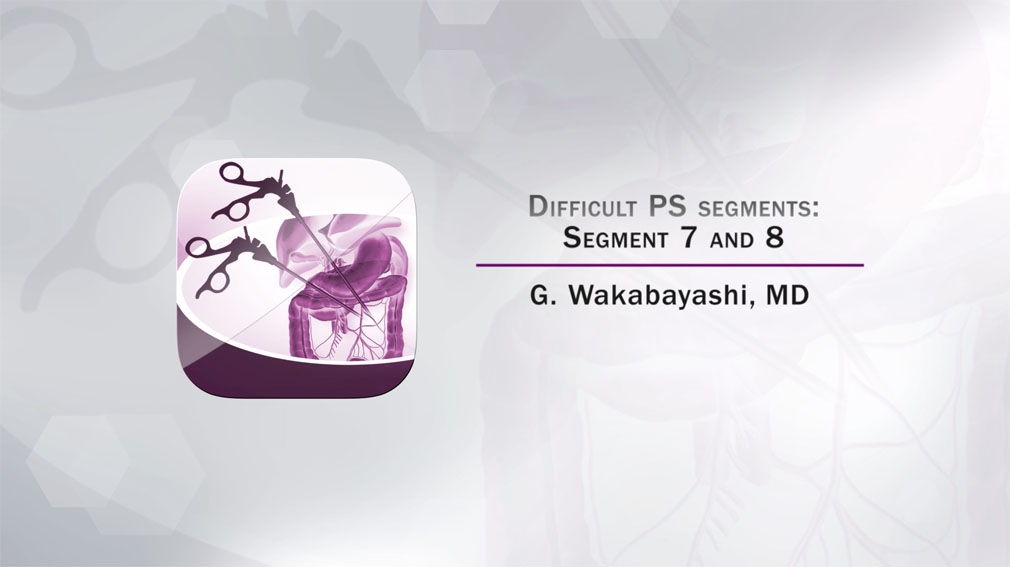Difficult PS segments: 7 and 8
Go Wakabayashi
Anatomical liver resection is defined as a complete removal of the part of liver according to portal territories referred by Couinaud's segmentation not leaving an ischemic area in the remnant liver. (1) We started laparoscopic anatomical liver resection from the hilar plate by using the Glissonian approach in 2005. (2) Even a single segmentectomy can be performed anatomically from the hilar plate by occlusion of the inflow to the segment with the Glissonian approach. (3) The inflow occlusion visualizes a demarcated area to be resected and main hepatic veins are always the borders of sections. (4) Exposing main hepatic veins is the key to perform precise anatomical liver resection and these exposed hepatic veins are the landmarks indicating intersectional planes. (5)

Laparoscopic segmentectomy of segment 8 and 7 is thought as most difficult procedures. (6) The Glissonian approach of segment 8 can be done extra-hepatically and the patient position can be supine without the right liver mobilization. However, an intra-costal port placement and the right liver mobilization sometimes make this procedure easier. The Glissonian approach of segment 7 can also be done extra-hepatically but the Glisson 7 should be taken by subtracting the Glisson 6 from the posterior Glisson at the Rouviere's sulcus. The patient position should be the left semi-lateral position with the right liver mobilization. An intra-costal port placement usually makes this procedure easier.
The liver parenchyma should be preserved as much as possible in liver resection but the parenchyma-sparing liver resection should be without deteriorating oncological outcomes. Here, we propose laparoscopic parenchyma-sparing anatomical liver resection. (7) As examples, laparoscopic segmentectomy of segment 8, as well as segment 7, will be shown in this presentation.